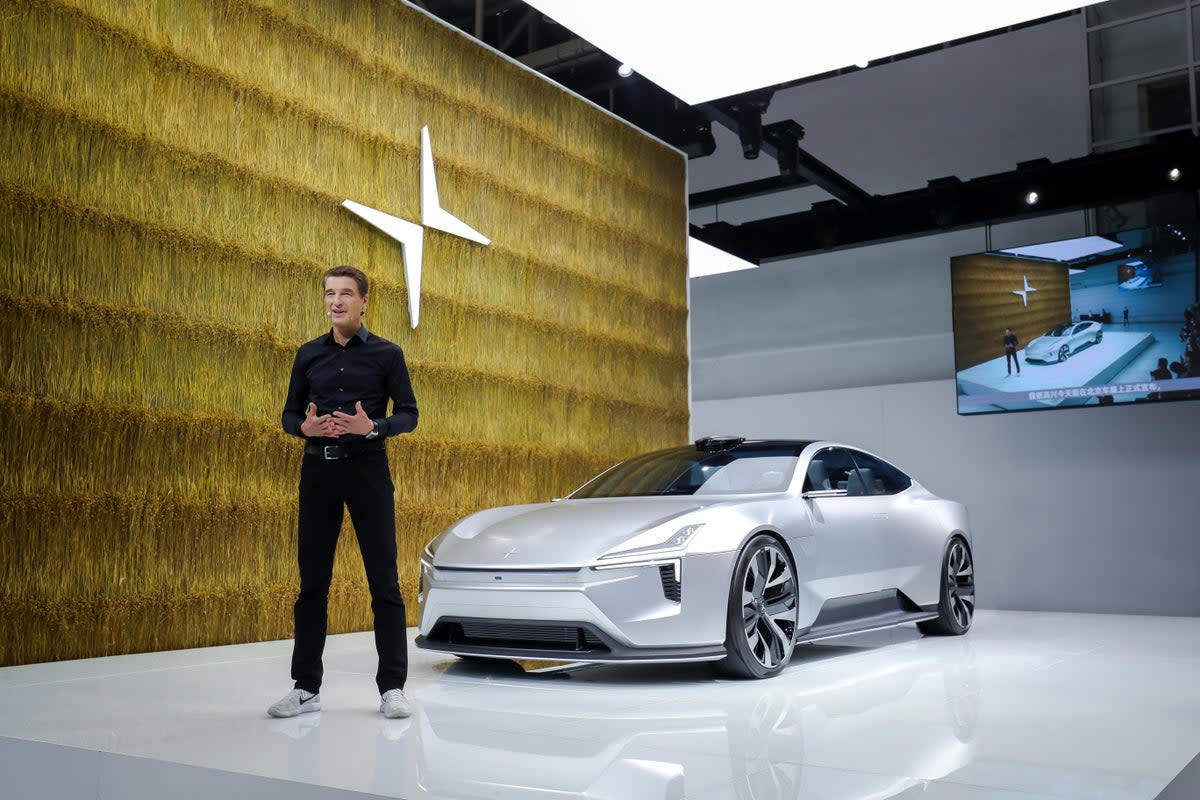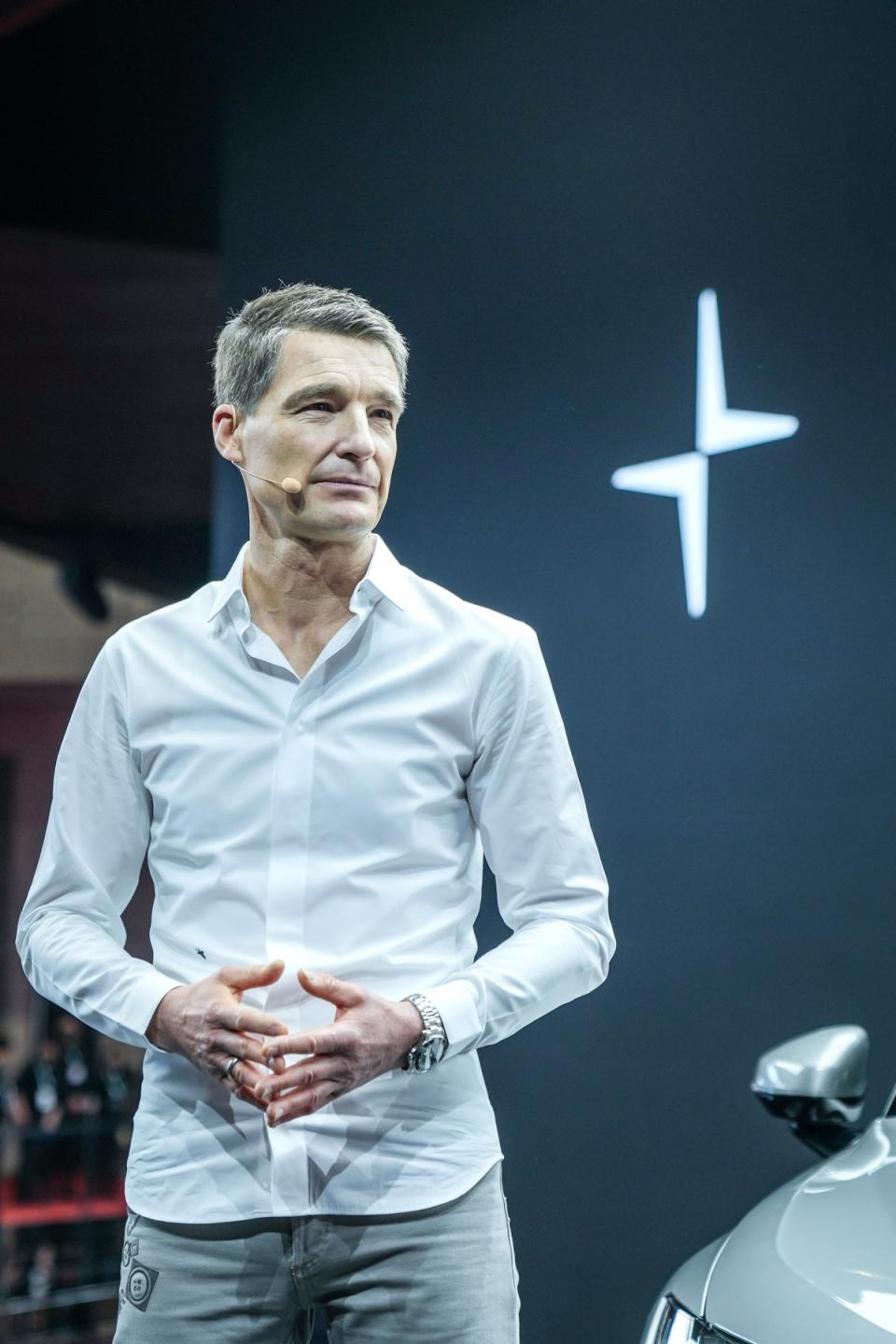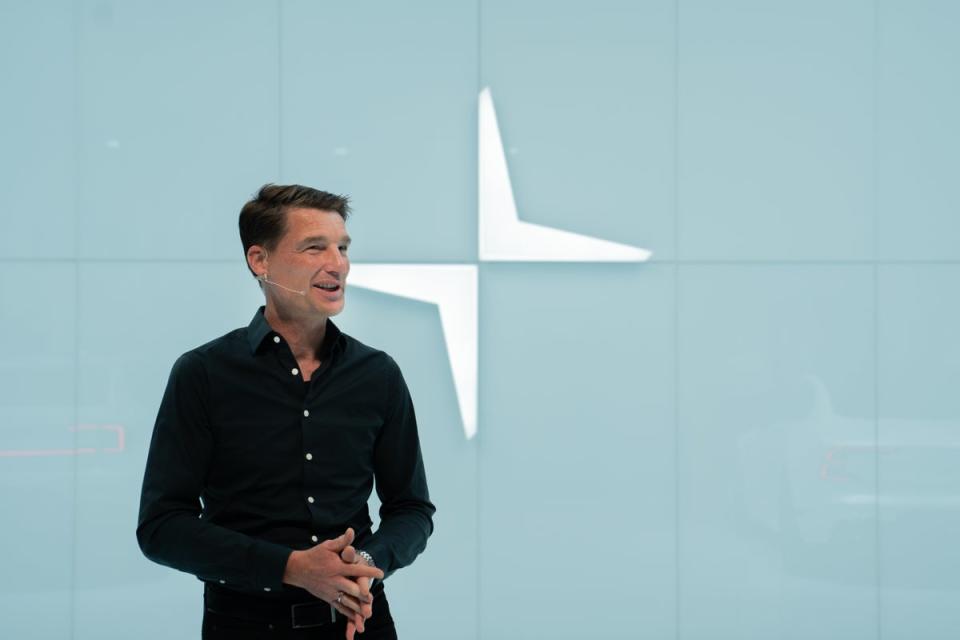A truly carbon neutral car? ‘Many consider it impossible, but we dare to differ,’ says Polestar boss

- Oops!Something went wrong.Please try again later.
Thomas Ingenlath sits down and looks around. Behind us is a wall, full of dials, switches and gauges.
He can’t help but smile. We’re in Control Room B in Battersea Power Station. It’s now a bar, but this place once controlled all the electricity for a swathe of London. Here he is, Ingenlath, the designer-turned-CEO for Polestar, the performance electric car brand, and we’re in a stark reminder of how energy generation used to be.
There’s a visible disconnect: the beautifully restored power station with its vast, cathedral-like turbine halls, art deco features and now, designer shops and bars, versus the dinosaur clunkiness of what it used to do. It’s the same with Ingenlath’s car. Downstairs in the ‘Polestar Space’ - they don’t call them showrooms - there’s the fastback model 2, alongside which many other vehicles on the road appear positively ancient and slow.
Ingenlath certainly looks the part. He’s wearing a black cashmere roll-top – beloved of that other design guru turned chief, Steve Jobs. He’s tanned, well-groomed, lean - presumably from all the cycling, sailing and ski-ing he loves to do.
It’s true, he doesn’t look like a traditional motor or corporate boss. No dull suit, shirt and tie set, for him.

Ingenlath was born in 1964, in Germany. Married with two sons and a daughter, he lives a cycle ride away from Polestar’s global headquarters in Gothenburg, Sweden.
He’s been the firm’s head since 2017, during which time he has managed the marque’s launch and subsequent rise to become a plaudits-winning brand, earning admiration for its head-turning lines, outside and in, as well as premium performance. The infotainment screen is something to behold, and in one of those details that smack of smart thinking and clever design it’s partnered with Google.
Worldwide, Polestar sales were up 80 per cent to 51,500 cars in 2022, easily passing its targets. This year, the firm, which listed on NASDAQ last year, is heading for sales of around 80,000. In the UK, Polestar grew at twice the industry rate - sales up 80 per cent versus a sector rise of 40 per cent. They’ve launched the Polestar 3, an SUV, and plan to roll out three more models by 2026.
It’s a stellar path for Polestar, that until it was spun-off to create a separate company, was the high-performance label for Volvo - like AMG for Mercedes - and hence the Swedish connection. Volvo remains the majority shareholder, although Volvo is itself part of China’s Geely group. Polestar cars are manufactured in China.
After studying at university at Pforzheim in Germany, Ingenlath obtained a masters in vehicle design at London’s Royal College of Art. He joined the Volkswagen group and worked for its Audi subsidiary. He rose to chief exterior designer for Volkswagen, then chief designer for its Skoda range.
In 2006, he became Director of Design at the Volkswagen Design Center in Potsdam. In 2012, he switched to Volvo, as head of design and led the product turn round. Six years ago, he was put in charge of Polestar.

He’s helming the company to fit neatly into a gap that is opening up in a market once dominated by Tesla. Elon Musk’s brand is still the leader, but whereas Tesla was once disruptive it’s looking more like a large, established car manufacturer. Musk’s courting of controversy, that has seen him become an increasingly divisive figure, has not helped Tesla’s standing. That’s created an opportunity for Polestar to challenge Tesla on price, performance and innovation. Musk’s car no longer turns heads, unlike Ingenlath’s uniquely-shaped Polestar.
It’s possible to see elements of previous designs for Audi and Volvo in the Polestar and it oozes Scandinavian cool. But Ingenlath is very much his own man, responsible not only for giving Polestar cars their distinctive head-turning appearance but also for defining the whole brand, which includes changing the way his cars are sold.
For him, he says, design is not just about looks but about the whole brand’s approach, and that means instigating a revolution in selling. Go to Polestar’s spaces in the 27 markets in which it sells and you will not be sold the car. Its staff are paid salaries and that’s it – they do not earn commission from selling cars. They’re there to inform and assist, to answer queries, to take on test drive; the cars are sold entirely online.
“The Polestar Space is entirely about you, the customer, and the car” says Ingenlath. “It’s not about creating an environment in which a salesperson can conclude a deal.” In that respect, Polestar is the same as Apple – the Apple Store staffer is there to explain and help, not sell you something you might not want or be unable to use. “There’s no bargaining; people want certainty that they’re not being ripped off,” he says. “They don’t want someone saying they can them do a ‘special price’ on something parked around the back.”
All the form filling, the finance, it’s done remotely. There’s no sitting at a desk in a showroom, having a coffee and succumbing to the patter. If they believe the car may not be right for you, they will say so. Remarkable, and refreshingly different from elsewhere. He grins. “We’re able to do these things because we’re new, because we’ve not inherited a dealer network.”

A word he returns to time and again, is “transparency”. It applies right across the piece, everywhere in the supply chain, sale and afterwards. Every Polestar has a “lifecycle assessment”, clearly detailing for each customer the environmental impact of their car.
Ingenlath is not playing at being green, paying lip service to climate change concerns, his company really is green – and it’s a car company to boot. His “moon-shot goal”, which he is actively pursuing, is having “a truly climate-neutral production car by 2030”. That’s some aim if you consider all the elements that go into making a car. As he says: “Many consider it impossible, but we dare to differ. And by 2030, we intend to make it happen.”
That means, “We will eliminate, not reduce, all greenhouse gas emissions from every aspect of production. From conception all the way to customer delivery, our target will be met without resorting to offsetting. Zero will mean zero.”
He sees his role as “creating a desirable brand, about creating a brand that fits with lifestyle brands. It’s about interpreting where tech is going, about where society is going and where we, as a company, fit in with that.” It’s an obvious advantage, that “the company is young, so we’re not held back by our past. A lot of what I do is to make sure we stay relevant in the future.”
To think, I say, he’s not mentioned any of the things that motor CEOs often want to discuss such as production rates, sourcing of parts, rising costs. “I can if you wish,” he says, his eyes twinkling. There’s no need, I reply. We’re both laughing.

